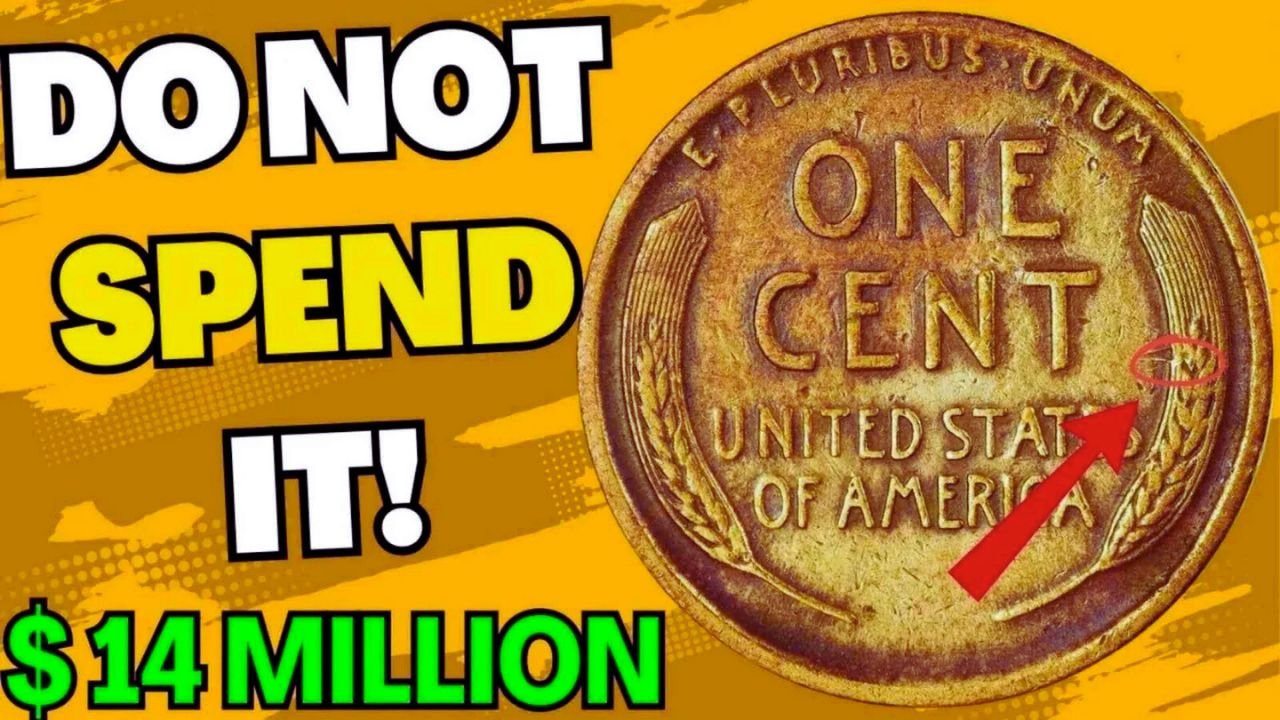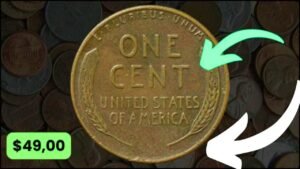Imagine checking your spare change and finding a penny worth millions. It sounds like a fantasy, but some collectors believe a rare Lincoln Wheat Penny could be valued at up to $14 million. Could one of these historic coins still be out there — maybe even in your wallet? Let’s separate fact from fiction and explore what makes this penny so legendary.
What Is the $14 Million Lincoln Wheat Penny?
The Lincoln Wheat Penny, minted between 1909 and 1958, is one of the most recognized coins in U.S. history. Featuring Abraham Lincoln on the front and two wheat stalks on the back, this coin marked the first time a real person appeared on American currency.
While most Wheat Pennies are only worth a few cents, one version — the 1943 Copper Wheat Penny — has reached mythic status due to its incredible rarity and value.
The History Behind the Lincoln Wheat Penny
The Lincoln Wheat Cent debuted in 1909, celebrating 100 years since Lincoln’s birth. Collectors immediately prized early editions like the 1909-S VDB, minted in small numbers.
During World War II, the U.S. Mint switched from copper to zinc-coated steel to conserve metal for the war effort. But a few copper planchets (coin blanks) accidentally slipped through, creating a handful of 1943 copper pennies. These mistake coins became the holy grail of U.S. coin collecting.
The $14 Million Penny — What Makes It So Valuable?
The 1943 Copper Wheat Penny is valuable because it’s both rare and historic. Only a few are confirmed to exist.
- One 1943 copper cent sold for $1.7 million.
- Experts believe a perfectly preserved example (MS-70 grade) could sell for up to $14 million.
That staggering potential makes this coin one of the most talked-about treasures in numismatic history.
How to Identify a 1943 Copper Penny
You don’t need to be an expert to spot the difference. Here’s a quick comparison:
| Feature | 1943 Copper Penny | 1943 Steel Penny |
|---|---|---|
| Color | Reddish-brown | Grayish-silver |
| Magnet Test | Non-magnetic | Strongly magnetic |
| Weight | 3.11 grams | 2.7 grams |
| Value Range | $100,000 – $14,000,000 | $0.05 – $2 |
Quick Tip: If your 1943 penny sticks to a magnet, it’s steel — not copper.
Other Rare Lincoln Wheat Pennies Worth Money
Even if you don’t find the $14 million penny, some other Wheat Pennies can still earn you thousands:
| Coin Type | Year | Mint Mark | Estimated Value |
|---|---|---|---|
| 1909-S VDB Penny | 1909 | S | $1,000–$3,000+ |
| 1914-D Wheat Penny | 1914 | D | $500–$10,000+ |
| 1922 No D Wheat Penny | 1922 | No Mint | $500–$15,000+ |
| 1955 Doubled Die Penny | 1955 | None | $1,000–$10,000+ |
Expert Tips for Identifying Rare Pennies
- Check the Year: Focus on 1909, 1914, 1922, 1943, and 1955.
- Use a Magnet: Genuine 1943 copper pennies won’t stick.
- Inspect the Mint Mark: “S” (San Francisco) and “D” (Denver) mint marks are often rarer.
- Look for Errors: Doubling, off-center strikes, or missing details can increase value.
- Get Certified: Submit valuable finds to PCGS or NGC for professional grading.
FAQs About the $14 Million Penny
Q1: Is there really a Lincoln Wheat Penny worth $14 million?
A: No penny has officially sold for $14 million yet, but experts believe a flawless 1943 copper penny could reach that price at auction.
Q2: Can I find one in circulation today?
A: It’s unlikely, but not impossible. Rare coins occasionally appear in rolls, jars, or inherited collections.
Q3: What should I do if I think I found one?
A: Don’t clean it. Contact a professional coin grader immediately for authentication.
Q4: How many 1943 Copper Pennies exist?
A: Fewer than 20 are confirmed worldwide, making them extremely rare.
Q5: Are all old pennies valuable?
A: No. Most are worth only face value unless they have unique dates, mint marks, or errors.
Conclusion: Check Your Change — You Could Be Sitting on a Fortune
The Lincoln Wheat Penny is more than just pocket change — it’s a piece of American history that could be worth a life-changing sum. While the fabled $14 million penny remains elusive, the thrill of discovery keeps collectors searching.




